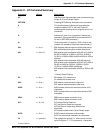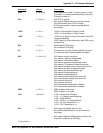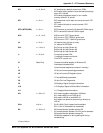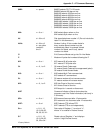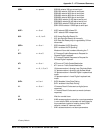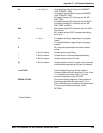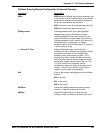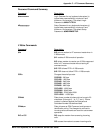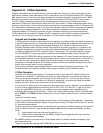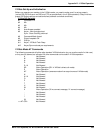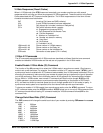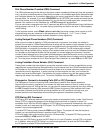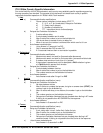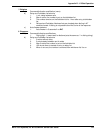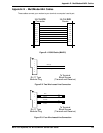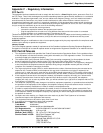
107
Appendix D - V.25bis Operation
Multi-Tech Systems, Inc. MT2834BA/BL Series User Guide
Appendix D - V.25bis Operation
Chapter 4 described a set of commands which let the modem dial, hang-up, and be configured for various
applications. However, these commands, the AT command set, are only functional when the DTE transmits
data asynchronously. That is, they cannot be used with synchronous equipment such as that found in IBM's
Binary Synchronous Communications (BSC) and Synchronous Data Link Control (SDLC)* environments.
The ITU V.25bis commands provide you with an alternate set of commands and responses to those
described in Chapter 5 for applications in which the DTE is synchronous. V.25bis commands support dialing
functions in asynchronous or synchronous mode according to the recommendations of the ITU; however, the
AT commands are understood to reign in the asynchronous world, while the V.25bis commands are relegated
to the synchronous world of datacomm. If you need to establish a datacomm link over Public Switched
Telephone Network (PSTN) dial-up services, and your equipment outputs a synchronous data stream,
V.25bis commands are essential. V.25bis mode AT commands do not include any modem configuration
commands. You can execute normal AT commands in V.25bis mode for modem configuration.
Delayed and Forbidden Numbers
V.25bis provides the facility to delay failed call retry attempts by putting numbers that failed to connect on
a special Delayed Number list. Subsequent dialing of these numbers will be delayed (time specified by a
country regulation) and an appropriate message displayed. If the number is retried more than the
maximum allowed number of times (number is also specified by country regulation), it is placed on the
Forbidden Numbers list, and no further retries will be allowed. When the Forbidden Numbers list is full,
no dialing is allowed and a CFIFF indication is given. The modem in AT command mode will respond
with NO CARRIER. If country regulations require that the Forbidden Numbers list be checked in AT
mode, then NO CARRIER will be the response to a dial attempt in AT mode. Numbers will also be put on
the Forbidden Numbers list if the Delayed Numbers list is full and a new number fails for the first time. In
that case, the new number will be added to the Delayed Number list and the oldest existing number
added to the Forbidden Numbers list. Numbers are removed from the Forbidden Numbers list by after a
certain time has past (also by country regulation).
Some country regulations have numbers remain on the Forbidden Numbers list permanently. The
Delayed Number and Forbidden Numbers lists are eight numbers long (20 characters each).
V.25bis Operation
Operation in V.25bis mode is similar to AT command mode in that certain DIP-Switch functions are
important to its operation. V.25bis does not include any speed detection for asynchronous mode, so
when you are giving commands, you must stay in your initial speed (i.e., if you change your terminal
speed while entering an AT command, you will get no responses). In synchronous mode, the modem
supplies the clock, so the synchronous terminal “knows” the speed.
You must be in V.25bis mode for the commands described here to function. Most AT commands will also
function, except those associated with dialing such as ATD, ATN, ATO, and ATU. To get into V.25bis
mode, you type AT$V1. At this point your modem does no more speed or parity detection (things
associated with asynchronous operation). To get out of V.25bis mode and back into AT command mode,
enter AT$VO. The AT$V2 command allows you to run one V.25bis command from AT command mode
without
leaving AT command mode.
There is no command to select between asynchronous and synchronous V.25bis operation. The position
of DIP-Switch #12 selects between modes. For synchronous mode, DIP-Switch #12 must be UP, and the
AT command mode enabled.
Another asynchronous mode concern is the problem of connecting at a different speed than the speed at
which the serial port is set. If your modem port speed is different from the serial port speed, you must
either:
1) Enable speed conversion and have flow control on, or
2) Enable connect responses (with the ATX1 command) and change the serial baud rate after
receiving a connect message.
If the $VD1 command is entered when in Auto-Answer mode, the modem answers immediately upon
receiving the first ring.
There is no disconnect message (NO CARRIER) if a normal connection is made.



